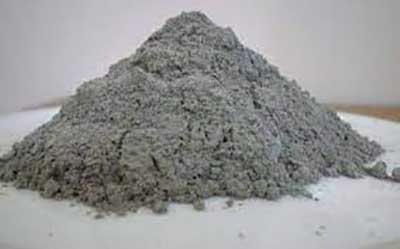Relevance: GS-3: Conservation, environmental pollution and degradation, environmental impact assessment
Key phrases: Fly ash, MOEFCC, Cement, Coal, Thermal power plant, utilization policy,
Why in News?
- The Union Ministry of Environment, Forest and Climate Change (MoEFCC) has notified the latest amendments to the Environment (Protection) Act for better monitoring and utilisation of fly ash by coal-based thermal power plants (TPPs) in the country.
What is Fly Ash?
- Fly ash is a fine grey powder consisting mostly of spherical, glassy particles that are produced as a by-product in coal-fired power stations. Fly ash has pozzolanic properties, meaning that it reacts with lime to form cementitious compounds. It is commonly known as a supplementary cementitious material.
- Fly ash is a by-product from burning pulverized coal in electric power generating plants. During combustion, mineral impurities in the coal (clay, feldspar, quartz, and shale) fuse in suspension and float out of the combustion chamber with the exhaust gases. As the fused material rises, it cools and solidifies into spherical glassy particles called fly ash.
- Fly ash includes substantial amounts of silicon dioxide (SiO2), aluminium oxide (Al2O3), ferric oxide (Fe2O3) and calcium oxide (CaO).
Effect of fly ash on environment:
- Toxic heavy metals present: All the heavy metals found in fly ash nickel, cadmium, arsenic, chromium, lead, etc—are toxic in nature. They are minute, poisonous particles accumulate in the respiratory tract, and cause gradual poisoning.
- Radiation: For an equal amount of electricity generated, fly ash contains a hundred times more radiation than nuclear waste secured via dry cask or water storage.
- Water pollution: The breaching of ash dykes and consequent ash spills occur frequently in India, polluting a large number of water bodies.
- Effects on environment: The destruction of mangroves, drastic reduction in crop yields, and the pollution of groundwater in the Rann of Kutch from the ash sludge of adjoining Coal power plants has been well documented.
Utilization areas of fly ash:
The most important utilization areas of fly ash are as follows:
- Cement manufacturing: The fly ash contains substantial percentage of silica, alumina and lime and can be used as a partial replacement of Portland cement. The replacement rates normally run between 20% to 30% but can be higher. As a result concrete made with fly ash is stronger and more durable than traditional concrete made with Portland cement. Moreover it is less susceptible to chemical attack and hence suitable for coastal atmosphere.
- Filling of low lying area: The fly ash especially bottom ash can be suitably utilized for filling low lying areas over which future construction could be carried out. It can be also used for reclamation of sea like Paradeep, Puri, Balasore, Astaranga, Gopalpur etc.
- Construction of road and embankment: Fly ash is a lightweight material. Therefore it undergoes lesser settlement and hence can be used for embankment construction over weak substrate such as alluvial clay or silt where excessive weight could cause failure. Due to its low compressibility it can also be used for road construction as a sub grade material.
- Fly ash brick: Fly ash can be used for manufacturing of bricks used for building construction. These bricks are light in weight and stronger than common burnt clay bricks available in our state.
- Ash pond dyke raising: The ash produced in power plants are disposed off in ash pond in slurry form. Due to land constraints the dykes of ash pond are raised in stages. The ash from ash pond is generally used for raising this dyke which in turn saves the borrow material.
- Agriculture: Since fly ash contains micronutrients like phosphorus, potassium and calcium, improves water holding capacity and soil aeration, it can be suitably used in agriculture sector to improve crop yield Fly ash can also reclaim saline alkali soil resulting in saving of gypsum.
Government of India Initiatives on Fly Ash:
Government took following efforts have been made to make optimum utilization of fly ash as an environmentally sustainable and economically viable product:
- The Ministry Of Environment And Forests vide its notification in 2009, has made it mandatory to use fly ash based products in all construction projects, road embankments works and low lying land filling works within 100kms radius of thermal power station.
- To use fly ash in mine filling activities within 50kms radius of thermal power stations.
- GST rates on fly ash and its products have been reduced to 5%.
- To facilitate 100% ash utilization by all coal based thermal power plants, a web portal for monitoring of fly ash generation and utilization data of Thermal Power Plants and a mobile based application titled “ASHTRACK” has been launched by the Government that will help to establish a link between fly ash users and power plants executives for obtaining fly ash for its use in various areas.
- Ash-park has been developed and awareness programme for utilisation of fly ash and its products have been conducted.

Source: The Hindu BL
Mains Question:
Q. The Union Ministry of Environment, Forest and Climate Change (MoEFCC) has notified the latest amendments to the Environment (Protection) Act for better monitoring and utilisation of fly ash by coal-based thermal power plants (TPPs) in the country. In this context briefly explain fly ash? What are the areas where it can be utilized in an effective and sustainable manner? Illustrate.








